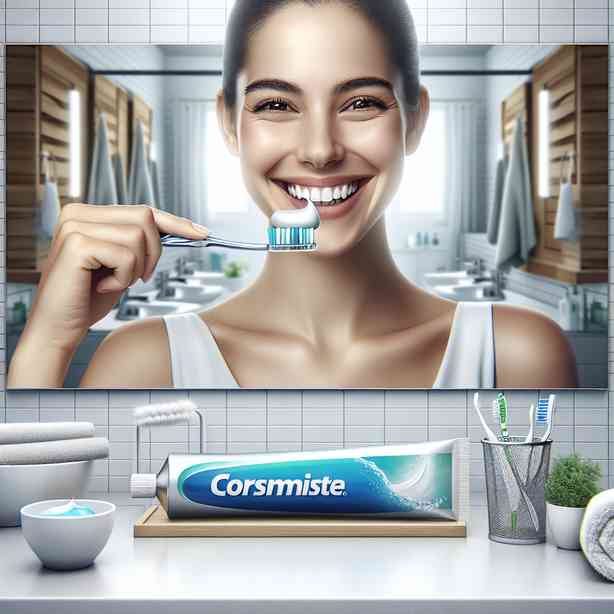
In the world of advertising, there are certain commercials that resonate with audiences for various reasons. Among these, some evoke strong emotions, while others might trigger immediate reactions, perhaps even prompting a change in behavior. One such commercial that stands out is one that caused many viewers to rush to their bathrooms to brush their teeth immediately after watching. This article will delve into the elements that make such commercials impactful, their underlying psychological mechanisms, and the broader implications of advertising on consumer behavior.
From the outset, it is essential to understand the power of visual storytelling in commercials. The effectiveness of a commercial often hinges on how well it can convey a message in a short span of time. This particular commercial utilizes vibrant visuals, engaging narratives, and relatable characters that draw the audience’s attention immediately. The combination of these elements creates an immersive experience that captures viewers and keeps them invested in the story being told.
Moreover, an essential component of effective advertising is the use of humor or shock factors. In this particular commercial, as the narrative unfolds, viewers may find themselves chuckling at an unexpected twist, or they might be taken aback by a surprising moment. This emotional engagement is crucial; it not only makes the advertisement memorable but also prompts viewers to associate positive feelings with the product being advertised. As people finish watching the commercial, they are more likely to feel motivated to act, in this case, by brushing their teeth.
Another vital aspect is the demonstration of benefits. In commercials focused on dental hygiene, companies often highlight the advantages of using their products. This might include showcasing before-and-after scenarios that emphasize the transformative effects of regular brushing and the use of specific dental products. By visualizing the positive outcome, the commercial plays on viewers’ desires to achieve similar results. This clear and tangible demonstration creates a connection between the audience’s needs and the product, leading to immediate action, such as heading to the bathroom to brush their teeth.
The role of social influence cannot be overlooked either. Often, commercials sparkle with the presence of popular influencers or relatable figures within the advertisement. This technique establishes trust and credibility, as viewers may find themselves comparing their choices with those individuals. If the commercial features a celebrity exuberantly brushing their teeth, it sends a message that this action is not just routine but a trendy and desirable behavior. As a result, individuals may feel compelled to emulate what they see, driving them to adopt similar habits in their lives.
Psychologists often refer to this phenomenon as the “bandwagon effect.” The more people perceive a specific action as popular or widely accepted, the more likely they will adopt it themselves. As viewers see others brushing their teeth happily in the commercial, they are subconsciously encouraged to follow suit. This sociocultural factor plays a significant role in shaping consumer behavior and decision-making processes, ultimately leading to increased sales and brand loyalty.
Furthermore, sound design should not be underestimated in creating a memorable advertisement. The jingles, slogans, and even sound effects chosen for a commercial significantly impact the overall experience. Catchy tunes can linger in the mind long after the commercial has ended, promoting recall and recognition of the brand. For instance, if the commercial features a catchy jingle about dental hygiene, viewers may find themselves humming it while they get ready for bed. This auditory cue can prompt the viewer to brush their teeth, reinforcing the connection between the advertisement and the desired behavior.
The timing of the advertisement and the context in which it is viewed also play critical roles in shaping consumer responses. For many people, the evening is a significant time for personal grooming, including brushing teeth before bed. If a commercial airs during a time when viewers are already preparing for this routine, the likelihood of immediate reaction is heightened. Thus, timing and situational awareness make all the difference in ensuring that the commercial weaves seamlessly into viewers’ lives.
Additionally, it is essential to recognize that effective advertisements often focus on creating an emotional bond with the audience. This particular commercial likely resonates with feelings of nostalgia, humor, or aspiration. By tapping into these emotions, marketers can forge a connection that transcends the mere act of selling a product. This emotional response can lead viewers to form a deep-seated loyalty to the brand, often driving more than just immediate action – it fosters long-term engagement and commitment.
On a broader scale, the impact of such a commercial can extend beyond simple consumer behaviors. It can influence societal attitudes towards oral hygiene, underscoring the importance of dental care in day-to-day life. By promoting the message that brushing teeth is not just a mundane task but a vital part of one’s routine, advertisers can help reshape public perceptions regarding health and self-care practices. When many viewers share their experiences of rushing to brush their teeth after seeing the commercial, it creates a collective awareness that enhances the relevance of dental hygiene in daily conversations.
To summarize, the power of a commercial that prompts immediate action, such as brushing teeth, is multifaceted. It involves a delicate interplay of engaging storytelling, psychological triggers, social influence, effective sound design, and emotional bonding. Such advertisements highlight the intricate ways in which marketing shapes consumer behavior while also emphasizing the importance of maintaining health and hygiene practices. As viewers become more aware of the implications of such commercials, they may find themselves transformed in small yet significant ways. Ultimately, this opens the door for further discussions on how advertising impacts our daily lives, nudging us towards better habits and healthier lifestyles. By recognizing the elements that create a memorable commercial, we can appreciate the art and science behind effective marketing and the positive changes it can inspire.


